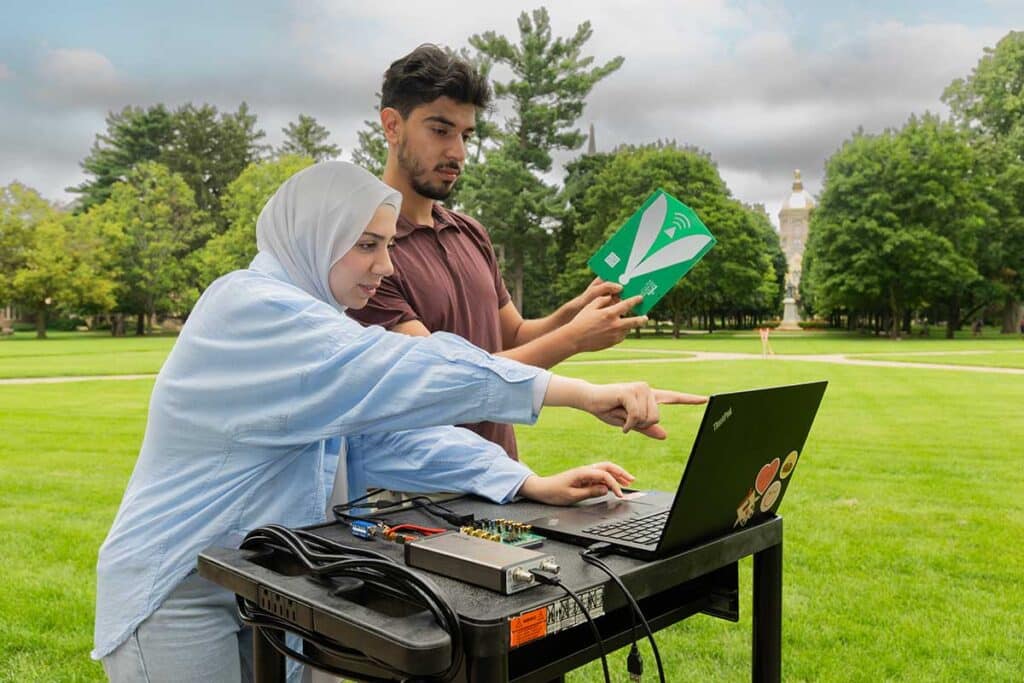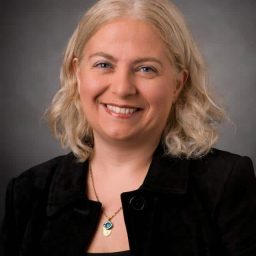By Stephanie Loney
U.S. National Science Foundation (NSF) SpectrumX is excited to invite undergraduate students interested in wireless and radio frequency research to participate in its Research Experiences for Undergraduates (REU+) program this summer.
“This is a unique opportunity for any undergraduate with interest in radio spectrum, its role in everyday wireless devices… [and] its use in science,” said Aylin Yener, Roy and Lois Chope Chair in Engineering at The Ohio State University and Director of the NSF SpectrumX Education and Workforce Development Working Group (EWG). “All qualified candidates are welcome to apply.”
In the REU+ program, students will be given the opportunity to work on important research projects with mentors in their fields of interest including, but not limited to: spectrum use cases and coexistence, radio and network technologies, data and machine learning, spectrum economics and policy, science communication, and science education.
However, NSF SpectrumX’s commitment to providing personalized experiences for its REU+ participants expands beyond offering students a variety of research areas to explore. “We work with each mentor and student before the summer to identify what knowledge and skills the student needs to complete a successful research project or would like to learn, whether it be project management or science communication,” said Anja Fourie, Project Director for Broader Impacts at the National Radio Astronomy Observatory (NRAO) and Deputy Director of the NSF SpectrumX EWG.
The culmination of the REU+ program will be a research poster presentation that each student will develop under the guidance of their mentor. This presentation will allow REU+ participants to showcase the research they have completed and gain valuable experience in effectively communicating complex scientific topics.
While official REU+ programming is limited to the summer, NSF SpectrumX aims to continue supporting participants into the fall semester and beyond. “The REU+ program is unique in that [NSF] SpectrumX has committed to engaging participants throughout the year and not just for the 10 weeks over the summer,” said Fourie. “We also encourage our REU+ alumni to remain engaged with [NSF] SpectrumX and the US spectrum community by offering travel grants,” which can be used to attend relevant research conferences and meetings.
During the 2024 REU+ program, NSF SpectrumX hosted 12 students from 10 universities across the country. These students supported research on artificial intelligence/machine learning-based methods for environment classification using wireless signals, science communication and education framework design, software tools and design for radio frequency and microwave integrated circuit education, and more.
This year, NSF SpectrumX looks forward to expanding the REU+ program. “In 2025, we are working with government, industry, and academia in the hopes to accommodate more participants,” said Fourie.
Host sites for the 2025 REU+ program are the NRAO, the University of Notre Dame, the University of California Los Angeles, and the University of Virginia, and research will be conducted in person. Students should plan to dedicate up to 40 hours a week for 10 weeks to this program, which has a mid-May start date. The program arranges participant housing and offers stipends for travel, food, and other living expenses.
To learn more and apply, please visit the NSF SpectrumX REU+ landing page. The REU+ program application deadline is February 28, 2025, so interested students are encouraged to apply as soon as possible.
Students will be notified of their application outcome on March 10, 2025.
About SpectrumX
SpectrumX is funded by the U.S. National Science Foundation (NSF) as part of its Spectrum Innovation Initiative, under grant number AST 21-32700. SpectrumX is the world’s largest academic hub where all radio spectrum stakeholders can innovate, collaborate, and contribute to maximizing social welfare of this precious resource.
To learn more about SpectrumX, please visit spectrumx.org.
Contact:
Stephanie Loney, Research Communications Specialist
SpectrumX / Notre Dame Research / University of Notre Dame
sloney@nd.edu / 574.631.7804
spectrumx.org


